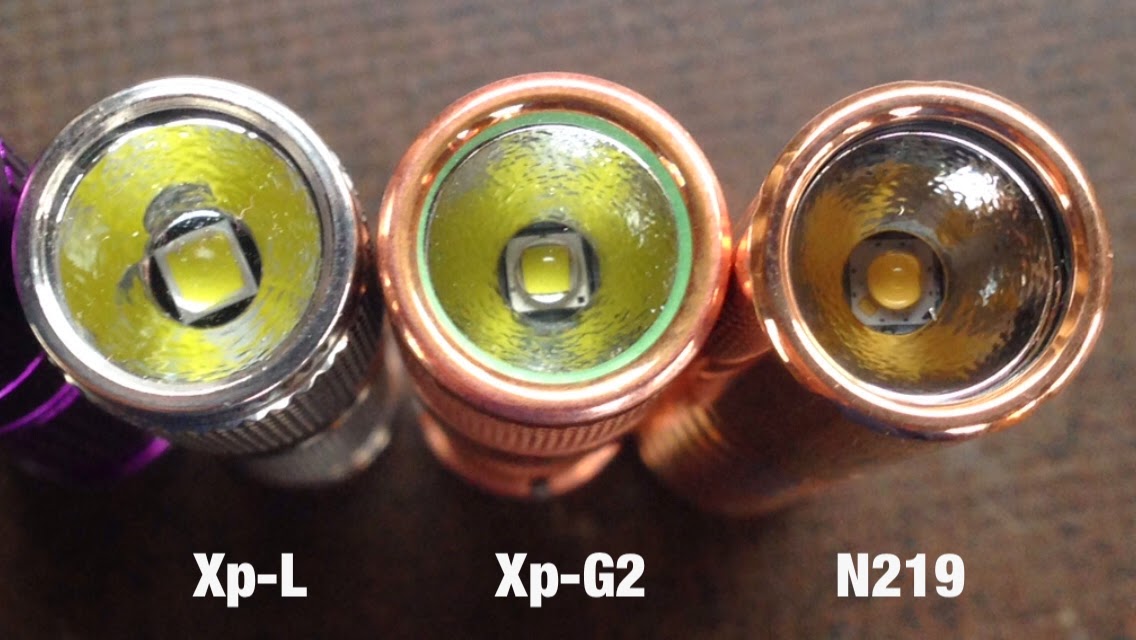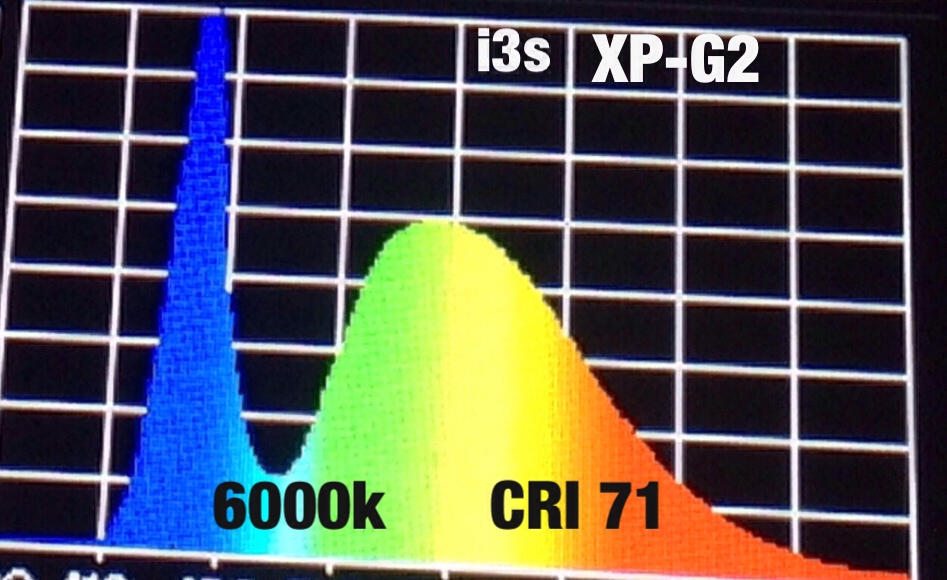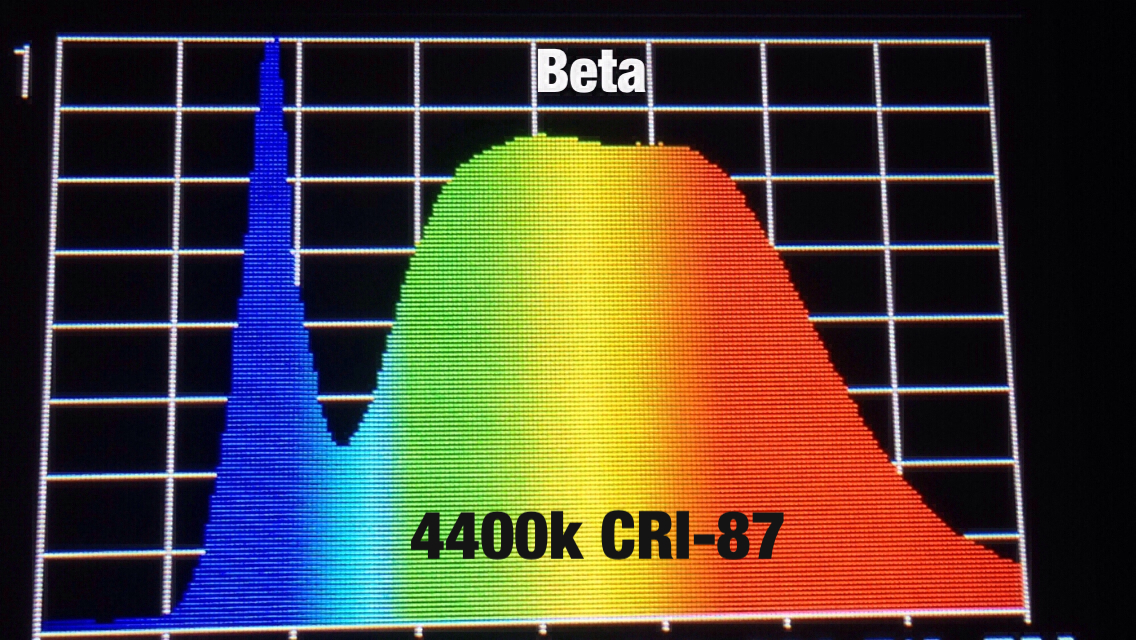jon_slider
Flashlight Enthusiast
- Joined
- Mar 31, 2015
- Messages
- 5,155
My first Vinh order.
This is my story about my aaa flashlight experience, as a total newbie, and some of the stages of my journey. The result of which is a request to modify a PWM 5800K XP-G2 Maratac Cu, to high CRI with No PWM.
Today I mailed my Maratac Cu Rev 3, whose PWM mode sequence is 40-1.5-138
and an Olight i3s, whose Current Controlled mode sequence is 20-85-0.5
I requested that the Olight Driver be installed in the Maratac, with an LED swap to N219A
Backstories
Tint and CRI
I have been extremely fortunate to have the help of darksucks.com owner and creator of the Prometheus Beta Cu that I recently bought. Its mode sequence is 1-15-85 and it has transformed my awareness of LED Color Temperature and Color Rendering Index.
When I picked up my Beta Cu, in person because I live nearby, I asked Jason to take a reading of the CRI of the light, along with several other lights I had brought with me.
When I realized how little red and what low amplitude of most colors was present in my Thrunite Titanium with XP-L, Olight i3s with XP-G2, and Maratac Rev 3 also with XP-G2, it was a revelation. The result of which is my current "Copper Dream Light".
The goals of my Dream Light are a quick release keychain light powered by a single aaa for:
1. Use as a nightlight
2. Use during the day, illuminating under a car, under a bed or couch, where there is ambient light
3. Use while Van camping, to illuminate things in my hads while sitting inside a Camper, and to wear as a headlamp on a baseball cap when moving around outside cooking something on a charcoal grill at night, with no ambient light, away from the city.
I want high saturation of color, rich reds, yellows and oranges. No green tint, nor blue. So I chose the N219A. I actually only have one each of a N219A and B, and they are quite different. When shining them on a red object, the A has a redder red. The B has by comprison a slightly cooler, bluer tint. I prefer the A, even though the B is brighter. I am not prioritizing throw, in fact I am more interested in a broad flood to light just the space of a single room, not trying to spot things more than 10 feet away.
The Maratac Cu has a number of features I find fascinating, despite being heavy. It also has a reversible pocket clip, that has proven very useful as a quick release keychain light.
For nightlight, I wanted less than 1 lumen, but for seeing things in my hands in full darkness, I wanted more than 0.1 lumens. For those reasons, I chose the 0.5 lumen driver of the Olight to transplant to the Maratac head of the Dream Light
The lights I have mentioned have lows of 0.04, 0.5, 1, and 1.5, so I felt able to prioritize my low light level preference after using those lights. Of the four lights Im discussing two have PWM circuits, both are copper, and I want to leave PWM behind. I plan to modify both lights, but am doing them one at a time. The Beta is more likely to receive the driver from a Thrunite Ti3, whose levels are .04-12-120.
The beauty of the Maratac body is that it works with both its own head, or the Beta head, which means I will get to mix and match if I decide I want to carry a L-M-H or a M-H-L Cu light, with either a 0.04 or a 0.5 low. (Truth is I will carry both, lol)
The Olight i3s and Maratac Rev3 use XP-G2 emitters, the Thrunite Titanium has an XP-L, and the Prometheus Beta has a Nichia 219a
Pictures:
the four lights

the four beams

the three LED tint reflections

The color graphs Jason so kindly allowed me obtain (this is hugely important to me, to have actual color temperature and CRI information, not specs, not guesses, not vague descriptions, just the numerical facts):
i3s 6000K CRI 71

Ti Ti 5700K CRI 70

Maratac 5800K CRI 70

Prometheus Beta 4400 CRI 87

for further exploration about CRI including comparisons of N219a and N219b see this very informative thread
http://budgetlightforum.com/node/27652?page=1
"the higher the current through 219A the higher the CRI, not only visible but measured as well. Although it is maybe 5 CRI range of change if I remember"
http://budgetlightforum.com/node/27652?page=2
"Long, Med and Short wavelength sensitive cones .
They found a massive difference between two subjects, both with apparently normal colour vision. Subject one 'JW' had 75.8% Red cones, 20% Green and 4.2% Blue, while subject two 'AN' had 50.6% Red cones, 44.2% Green and 5.2% Blue…
So there is likely a lot of individual variance as well, whilst to some 4000k might look like 'pure white', to others 6000k might look like 'pure white' in similar conditions. You have to find your own general preference and look for that, mine is generally around 5000k i.e 3D/4A."
This is my story about my aaa flashlight experience, as a total newbie, and some of the stages of my journey. The result of which is a request to modify a PWM 5800K XP-G2 Maratac Cu, to high CRI with No PWM.
Today I mailed my Maratac Cu Rev 3, whose PWM mode sequence is 40-1.5-138
and an Olight i3s, whose Current Controlled mode sequence is 20-85-0.5
I requested that the Olight Driver be installed in the Maratac, with an LED swap to N219A
Backstories
Tint and CRI
I have been extremely fortunate to have the help of darksucks.com owner and creator of the Prometheus Beta Cu that I recently bought. Its mode sequence is 1-15-85 and it has transformed my awareness of LED Color Temperature and Color Rendering Index.
When I picked up my Beta Cu, in person because I live nearby, I asked Jason to take a reading of the CRI of the light, along with several other lights I had brought with me.
When I realized how little red and what low amplitude of most colors was present in my Thrunite Titanium with XP-L, Olight i3s with XP-G2, and Maratac Rev 3 also with XP-G2, it was a revelation. The result of which is my current "Copper Dream Light".
The goals of my Dream Light are a quick release keychain light powered by a single aaa for:
1. Use as a nightlight
2. Use during the day, illuminating under a car, under a bed or couch, where there is ambient light
3. Use while Van camping, to illuminate things in my hads while sitting inside a Camper, and to wear as a headlamp on a baseball cap when moving around outside cooking something on a charcoal grill at night, with no ambient light, away from the city.
I want high saturation of color, rich reds, yellows and oranges. No green tint, nor blue. So I chose the N219A. I actually only have one each of a N219A and B, and they are quite different. When shining them on a red object, the A has a redder red. The B has by comprison a slightly cooler, bluer tint. I prefer the A, even though the B is brighter. I am not prioritizing throw, in fact I am more interested in a broad flood to light just the space of a single room, not trying to spot things more than 10 feet away.
The Maratac Cu has a number of features I find fascinating, despite being heavy. It also has a reversible pocket clip, that has proven very useful as a quick release keychain light.
For nightlight, I wanted less than 1 lumen, but for seeing things in my hands in full darkness, I wanted more than 0.1 lumens. For those reasons, I chose the 0.5 lumen driver of the Olight to transplant to the Maratac head of the Dream Light
The lights I have mentioned have lows of 0.04, 0.5, 1, and 1.5, so I felt able to prioritize my low light level preference after using those lights. Of the four lights Im discussing two have PWM circuits, both are copper, and I want to leave PWM behind. I plan to modify both lights, but am doing them one at a time. The Beta is more likely to receive the driver from a Thrunite Ti3, whose levels are .04-12-120.
The beauty of the Maratac body is that it works with both its own head, or the Beta head, which means I will get to mix and match if I decide I want to carry a L-M-H or a M-H-L Cu light, with either a 0.04 or a 0.5 low. (Truth is I will carry both, lol)
The Olight i3s and Maratac Rev3 use XP-G2 emitters, the Thrunite Titanium has an XP-L, and the Prometheus Beta has a Nichia 219a
Pictures:
the four lights
the four beams
the three LED tint reflections
The color graphs Jason so kindly allowed me obtain (this is hugely important to me, to have actual color temperature and CRI information, not specs, not guesses, not vague descriptions, just the numerical facts):
i3s 6000K CRI 71
Ti Ti 5700K CRI 70
Maratac 5800K CRI 70
Prometheus Beta 4400 CRI 87
for further exploration about CRI including comparisons of N219a and N219b see this very informative thread
http://budgetlightforum.com/node/27652?page=1
"the higher the current through 219A the higher the CRI, not only visible but measured as well. Although it is maybe 5 CRI range of change if I remember"
http://budgetlightforum.com/node/27652?page=2
"Long, Med and Short wavelength sensitive cones .
They found a massive difference between two subjects, both with apparently normal colour vision. Subject one 'JW' had 75.8% Red cones, 20% Green and 4.2% Blue, while subject two 'AN' had 50.6% Red cones, 44.2% Green and 5.2% Blue…
So there is likely a lot of individual variance as well, whilst to some 4000k might look like 'pure white', to others 6000k might look like 'pure white' in similar conditions. You have to find your own general preference and look for that, mine is generally around 5000k i.e 3D/4A."
Last edited:

